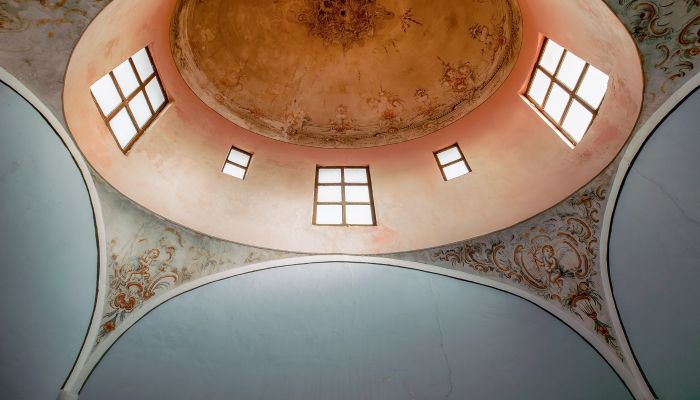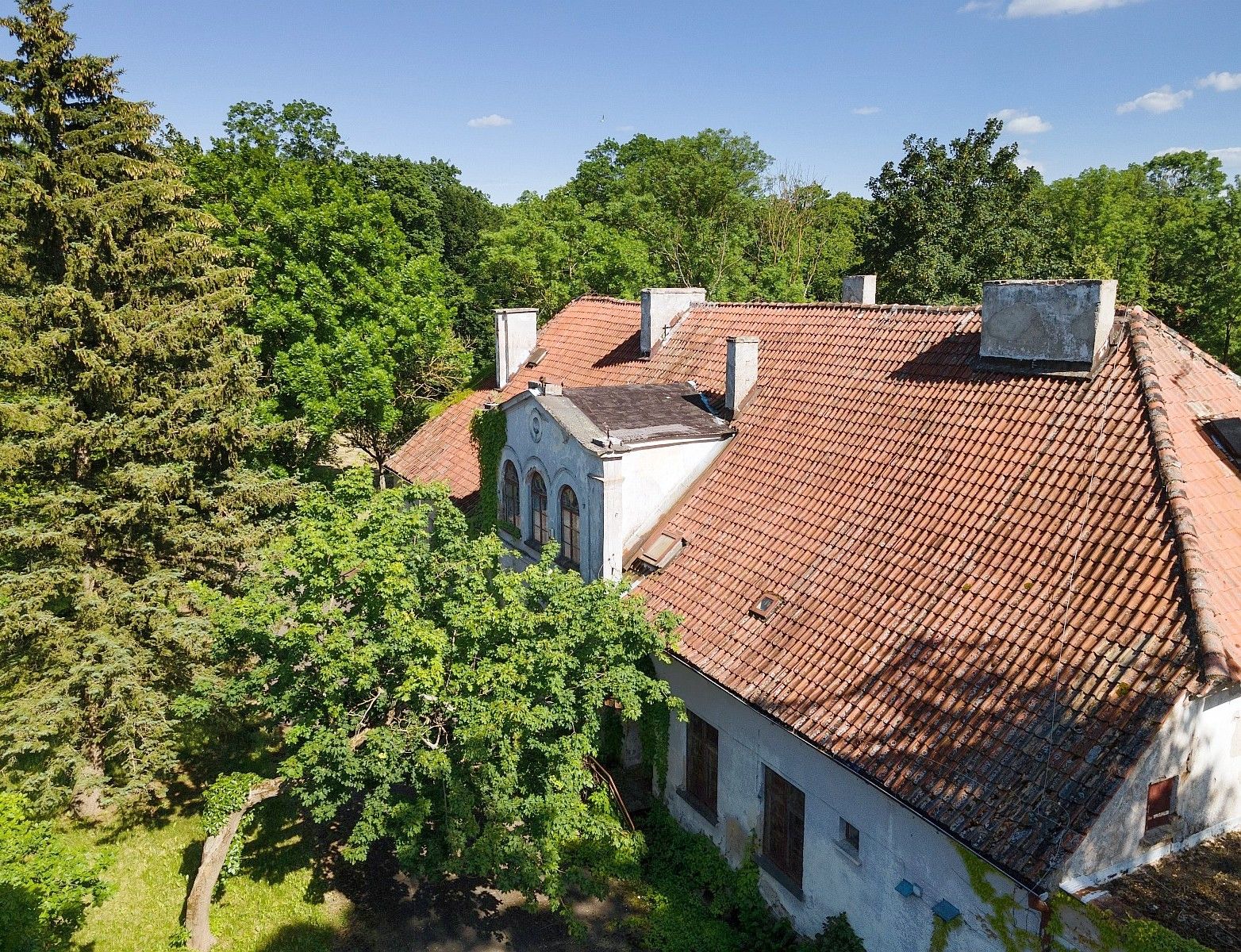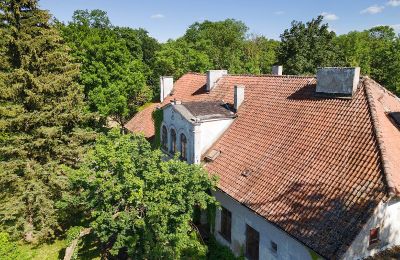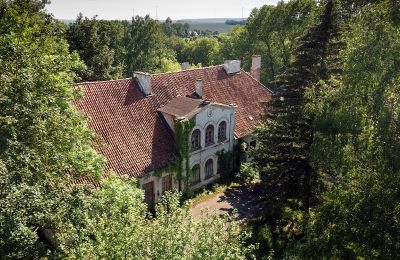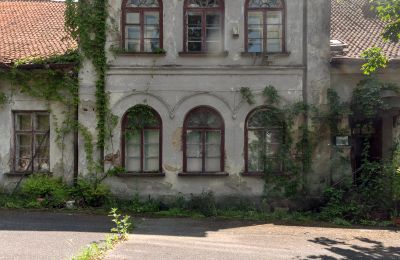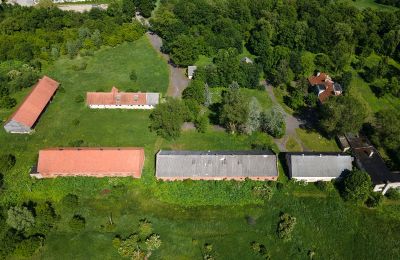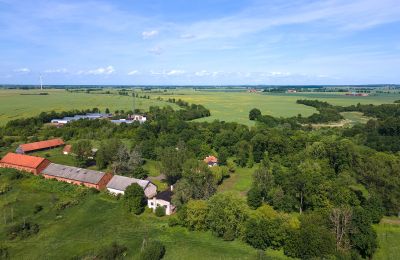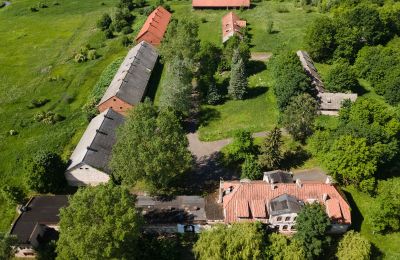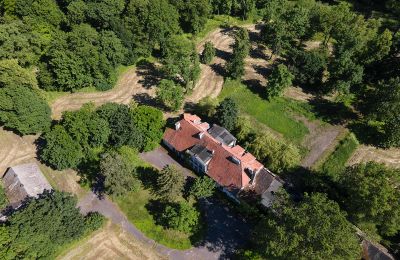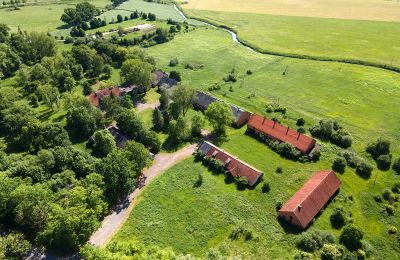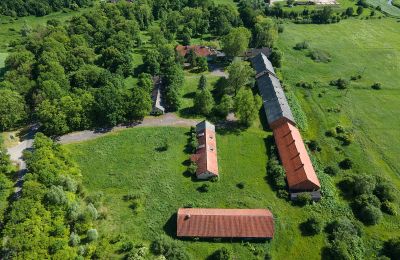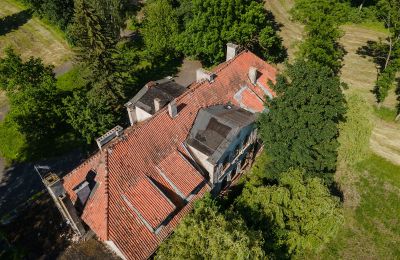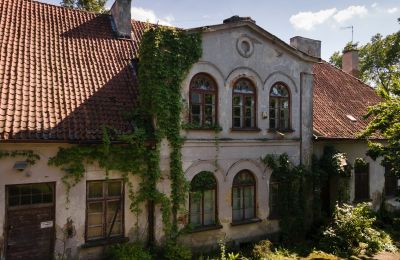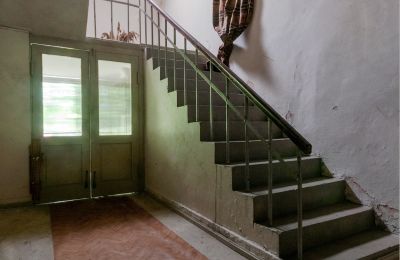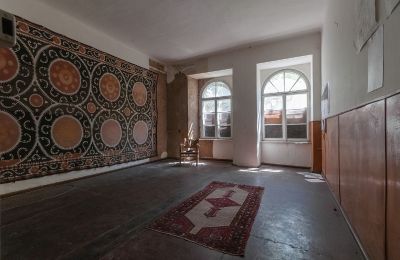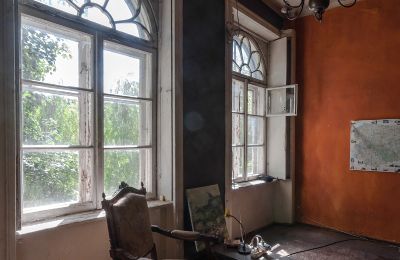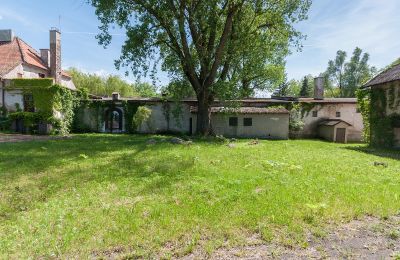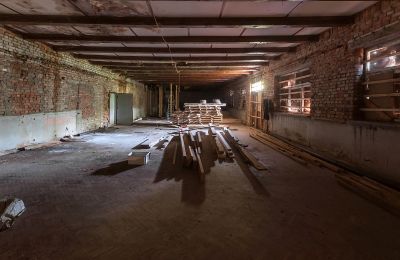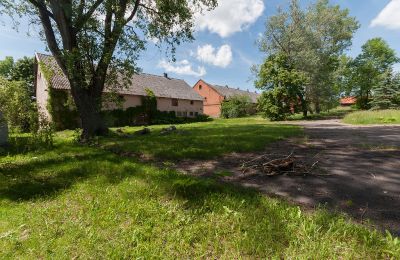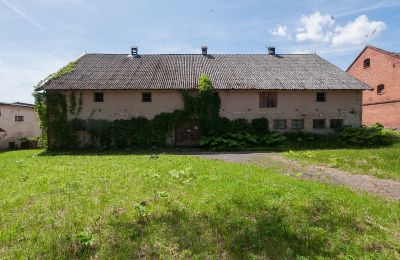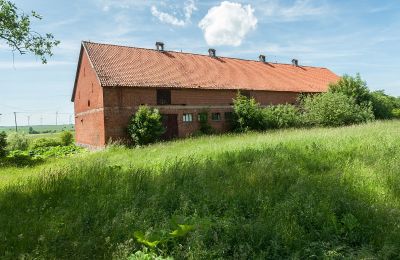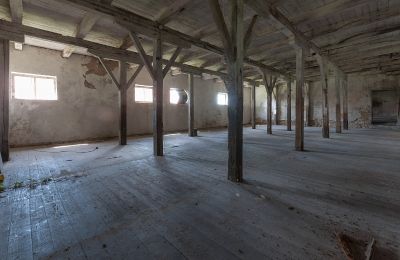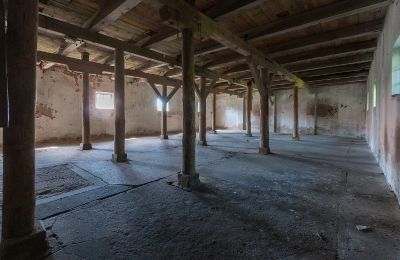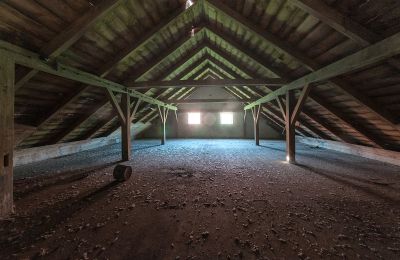The former Lamgarben manor estate in the historic region of East Prussia, located in northern Poland, is offered for private sale. Investors have the opportunity in 2025 to benefit from a special EU funding programme, which provides grants for entrepreneurial projects in selected areas of the Warmia-Masuria region. For more information, please contact us or visit: https://funduszeeuropejskie.warmia.mazury.pl/.
Property Overview:
- Manor house with approximately 700 m² of usable space
- Six large agricultural buildings in solid condition with expandable attics, totaling approximately 6,837 m² of usable space
- Small park with a stream, approx. 1 hectare
- Meadow land and garden
- Total land area about 11 hectares / 110,000 m²
Manor House:
The neoclassical manor dates back to the late 19th century and features a large driveway. It is a single-storey rendered brick building with a residential attic and a hipped roof. The house is fully basemented and has two central risalits on the courtyard and park sides. After 1945, the building was altered during state ownership. Originally, terraces existed on both front and rear sides but no longer remain. Inside, large rooms were subdivided by partition walls, and the original wooden staircase was replaced with a concrete one. Only a few original interior details remain, including old wooden floorboards, door frames, and the charming windows with original shutters. The manor is currently divided into two separate sections, each with its own entrance – suitable for several independent holiday apartments or private residence use. The original layout can be restored with minimal effort. Overall, the building’s condition is acceptable. The roof space has been partially developed and offers potential for additional living areas. Although the house is occasionally occupied during summer, a full renovation from basement to roof is required.
Manor Extension:
An extension was added to the west side of the manor in the early 20th century but was demolished in the 1970s and replaced by the current elongated annex. It is connected to the manor but currently sealed off. This annex served as storage, offices, accommodation and social rooms. It can be integrated into future uses or removed as needed. The rooms offer wonderful views of the surrounding natural landscape.
Agricultural Buildings:
Six former stable and utility buildings stand in front of the manor in good condition and are ready for use as storage or workspaces. Recently, parts of these buildings were used for furniture storage, exhibitions and antique markets. They include two stable buildings, a grain store, fodder magazine, barn and horse stable. Thanks to their size, high doors and good access, the buildings are suitable for fairs and events such as agricultural shows, boat fairs, vintage car exhibitions and more. The site also has potential as a venue for larger events such as concerts or festivals.
Manor Park:
Approximately 1 hectare of the original parkland with a stream and bridge remains. It stretches from the southern access road and encloses the manor on the east side.
Potential Uses:
The local municipality has approved several usage concepts in line with the zoning plan, which are available in writing. These include services in the tourism or medical sector such as:
- A leisure centre with hotel and wellness facilities
- Senior residence with up to 86 accessible units in the former stable buildings
- Agritourism use, e.g. riding stables
- Holiday apartments
Of course, residential use can be maintained. For example, the manor can be privately occupied after renovation while parking spaces can be rented out in the outbuildings. There is ample space for boats, camper trailers, vintage cars and more.
The estate lies within a listed historic zone and is exempt from property tax. For the remaining land, an annual tax of approximately €350 applies.
Historical Note:
From 1880 to 1911, the manor was home to Elisabeth Böhm – a German writer, feminist and pioneer of German agricultural housewives’ associations, which she founded in 1898. The movement focused on the education and exchange of experiences among rural women and promoted marketing of locally produced foods marked with a bee symbol. For her work, she was the first woman in Germany to receive the Golden Chain award from the University of Königsberg and was named an honorary citizen of the city. The idea of such associations spread throughout Europe and North America over time.
The Lamgarben estate in Garbno has been a listed monument in the Warmia-Masuria voivodeship since 2006. We welcome serious enquiries.

